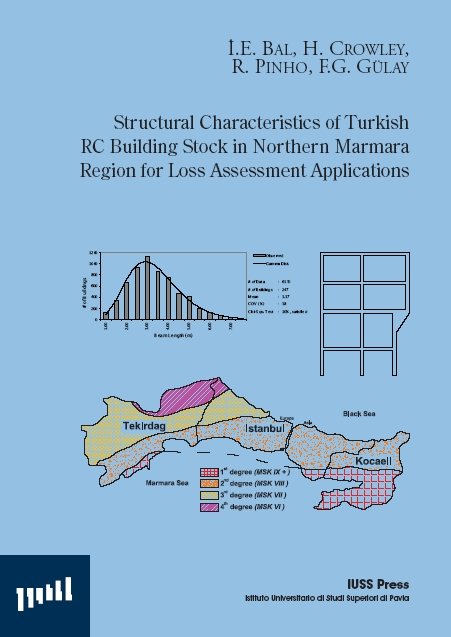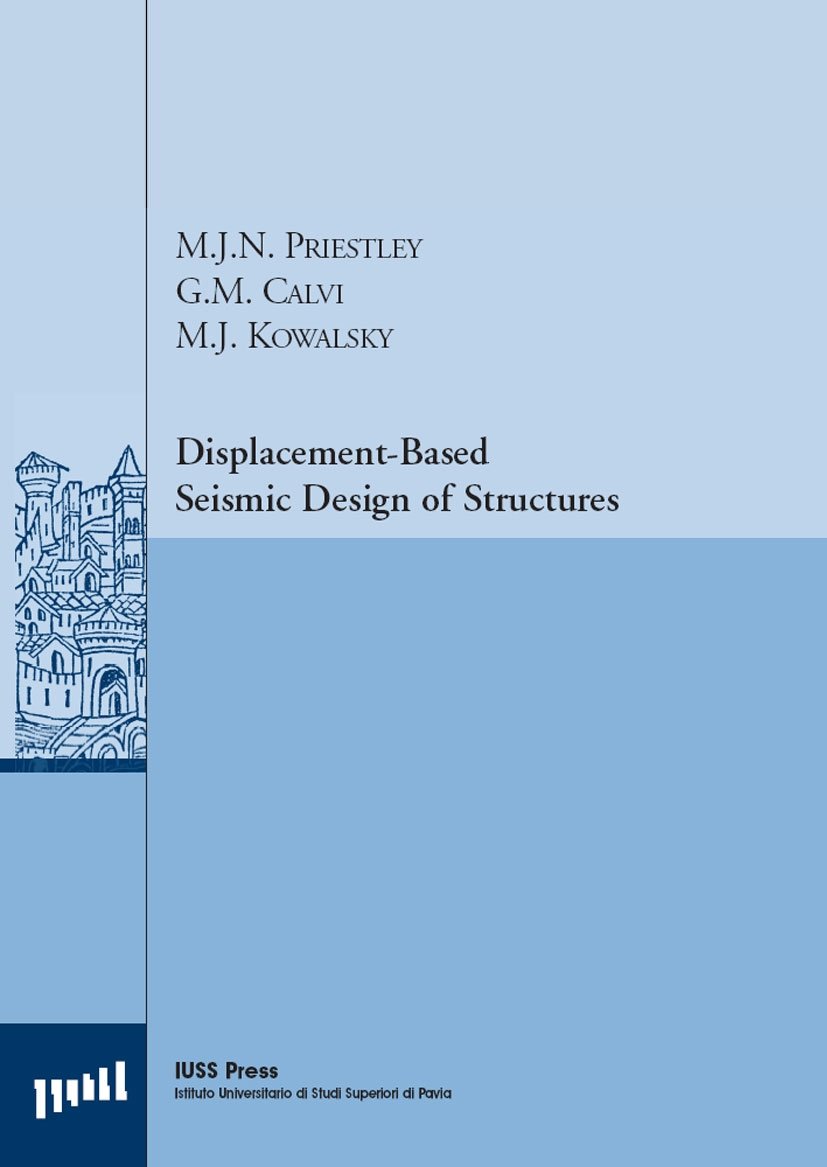Catalogue

Structural Characteristics of Turkish RC Building Stock in Northern Marmara Region for Loss Assessment Applications
24/03/2007
Progetto Antisismico di Edifici in Cemento Armato
01/09/2007Displacement-Based Seismic Design of Structures
Original price was: € 135,00.€ 101,25Current price is: € 101,25.
M.J.N. Priestley, G.M. Calvi, M.J. Kowalsky
ISBN: 88-6198-000-6
Displacement-Based Seismic Design of Structures is a book primarily directed towards practicing structural designers who are interested in applying performance-based concepts to seismic design.
Out of stock
Displacement-Based Seismic Design of Structures is a book primarily directed towards practicing structural designers who are interested in applying performance-based concepts to seismic design. Since much of the material presented in the book has not been published elsewhere, it will also be of considerable interest to researchers, and to graduate and upper-level undergraduate students of earthquake engineering who wish to develop a deeper understanding of how design can be used to control seismic response. The design philosophy is based on determination of the optimum structural strength to achieve a given performance limit state, related to a defined level of damage, under a specified level of seismic intensity. Emphasis is also placed on how this strength is distributed through the structure. This takes two forms: methods of structural analysis and capacity design. It is shown that equilibrium considerations frequently lead to a more advantageous distribution of strength than that resulting from stiffness considerations. Capacity design considerations have been re-examined, and new and more realistic design approaches are presented to insure against undesirable modes of inelastic deformation. The book considers a wide range of structural types, including separate chapters on frame buildings, wall buildings, dual wall/frame buildings, masonry buildings, timber structures, bridges, structures with isolation or added damping devices, and wharves. These are preceded by introductory chapters discussing conceptual problems with current force-based design, seismic input for displacement-based design, fundamentals of direct displacement-based design, and analytical tools appropriate for displacement-based design. The final two chapters adapt the principles of displacement-based seismic design to assessment of existing structures, and present the previously developed design information in the form of a draft building code. The text is illustrated by copious worked design examples (39 in all), and analysis aids are provided in the form of a CD containing three computer programs covering moment-curvature analysis (Cumbia), linear-element-based inelastic time-history analysis (Ruaumoko), and a general fibre-element dynamic analysis program (SeismoStruct). The design procedure developed in this book is based on a secant-stiffness (rather than initial stiffness) representation of structural response, using a level of damping equivalent to the combined effects of elastic and hysteretic damping. The approach has been fully verified by extensive inelastic time history analyses, which are extensively reported in the text. The design method is extremely simple to apply, and very successful in providing dependable and predictable seismic response. Authors Bios M.J.N.Priestley Nigel Priestley is Professor Emeritus of the University of California San Diego, and co-Director of the Centre of Research and Graduate Studies in Earthquake Engineering and Engineering Seismology (ROSE School), Istituto Universitario di Studi Superiori (IUSS), Pavia, Italy. He has published more than 450 papers, mainly on earthquake engineering, and received numerous awards for his research. He holds honorary doctorates from ETH, Zurich, and Cujo, Argentina. He is co-author of two previous seismic design books “Seismic Design of Concrete and Masonry Buildings” and “Seismic Design and Retrofit of Bridges”, that are considered standard texts on the subjects. G.M.Calvi Michele Calvi is Professor of the University of Pavia and Director of the Centre of Research and Graduate Studies in Earthquake Engineering and Engineering Seismology (ROSE School), Istituto Universitario di Studi Superiori (IUSS) of Pavia. He has published more than 200 papers and is co-author of the book “Seismic Design and Retrofit of Bridges”, that is considered a standard text on the subject, has been involved in important construction projects worldwide, such as the Rion Bridge in Greece and the upgrading of the Bolu Viaduct in Turkey, and is coordinating several international research projects. M.J.Kowalsky Mervyn Kowalsky is Associate Professor of Structural Engineering in the Department of Civil, Construction, and Environmental Engineering at North Carolina State University and a member of the faculty of the ROSE School. His research, which has largely focused on the seismic behaviour of structures, has been supported by the National Science Foundation, the North Carolina and Alaska Departments of Transportation, and several industrial organizations. He is a registered Professional Engineer in North Carolina and an active member of several national and international committees on Performance-Based Seismic Design.
| Weight | 2,00 kg |
|---|---|
| Dimensions | 17,0 × 24,0 cm |

